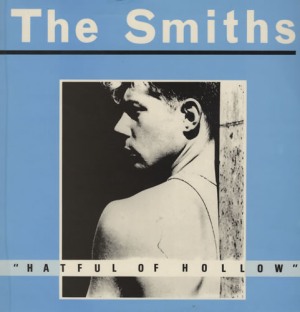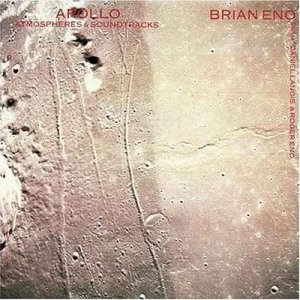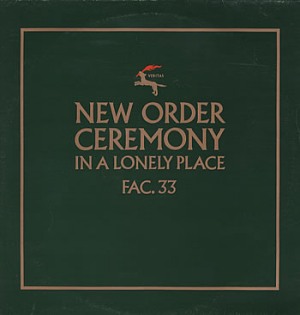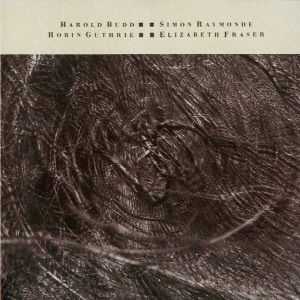|
Mystery Train might be my favorite place to go record shopping. The trip to Gloucester is long enough (about 45 minutes from Somerville) that I can’t justify going very often, but every time I come back with a pile of great music I certainly wouldn’t find in Boston. The just-in bins are overflowing, the records are reasonably priced, and virtually every genre has great finds. Someday I’ll head up to Mystery Train with a Record Store Day budget and stock up on jazz, Cocteau Twins EPs, and contemporary composers, but for now I’ll make the trip every few months—it had been at least six since my last trip—spend a few hours there, and go through a painful process of elimination.
The key to Mystery Train is exploring all of the additional, unpriced stock under the bins and off to the side (and going on a day when the owner’s available to price them for you). Here’s the simple logic: certain things that were overwhelmingly stocked in 1988 are now much harder to track down. I remember one particular trip when I “hid” a number of understock finds (The Smiths’ The Queen Is Dead, Morrissey’s Viva Hate, Ghostface Killah’s Supreme Clientele, American Music Club’s California among others) because no one was able to price them for me, and thankfully my cache was still in its hiding place during my next visit. This trip’s understock find was The Moon and the Melodies, but I didn’t have as much time to explore as usual.
68. The Smiths – Hatful of Hollow – Rough Trade, 1984 – $12.50

Virtually every record store has a plastic divider for the Smiths, but it’s becoming increasingly rare when anything actually occupies the slot. Judging by the reasonable prices on eBay, it’s not because the primary Smiths LPs are particularly scarce. There are plenty of singles, limited pressings, hard-to-find EPs, live bootlegs, and import editions to hunt down, but if you’re just interested in The Smiths, Meat Is Murder, The Queen Is Dead, Strangeways Here We Come, and Hatful of Hollow, you should be able to get them for around $10 apiece or cheaper if you can find a combination lot. Good luck finding any of those in a metropolitan store, however, unless there’s a pricey reissue in stock. The reason for this absence is that the Smiths are the vanguard artist for the 1980s division of the vinyl revival, much like Neutral Milk Hotel’s In the Aeroplane Over the Sea is the standard-bearer for 1990s indie vinyl nostalgia. Striking artwork, an ever-expanding cult audience, a comparatively limited catalog free of extended club mixes (cough, The Cure)—all of these help create an immediate, broad demand for the titles. “Oh, there’s a copy of The Smiths! Grab it!” The difference, of course, is that Aeroplane is still in print, which let it hit #6 on the top vinyl sellers for 2008. (Somehow, In Your Ear in Cambridge still has the gall to charge $25 for a used copy!) I’d previously mentioned the limited edition run of reissue Smiths singles, but they’d be wise to do entry-level priced copies of those major LPs and cash in huge. Forget these $18 picture discs and $27 colored vinyl editions; do $12 single LP pressings in 120 gram vinyl, and then switch to indulgent, 3LP collector’s editions a year later. (Edit: I see that Vinyl Collective is taking pre-orders for reissues of the Smiths' four full-lengths, with 2008 remasters courtesy of Johnny Marr, but at $24.49 they're twice what I'd recommend charging.)
It’s not like the Smiths are above cashing in. Hatful of Hollow was the first in a series of compilation releases to combine singles, b-sides, and alternate takes of their songs, catering to their fans’ desire for the original BBC Radio 1 recordings of early songs. I personally started out with the Smiths’ studio releases, but like Floodwatchmusic has discussed, such compilation releases may paint a more accurate picture of the group’s successes. I’m up in the air about my preferences, but the recordings of “Hand in Glove” and “What Difference Does It Make?” are more immediate here than on their self-titled LP and in total, six versions (and one completely exclusive song) aren’t available elsewhere. That’s not nearly as bad as the “Here’s our greatest hits compilation with one completely new song!” trick that so many bands pull. I’m not enough of a Smiths devotee for such a ruse to work on me, but if I come across Louder Than Bombs or Rank, you can guess what’s going to happen. I just know that it’s far more likely to happen in Lowell, Salem, or Gloucester than in Boston proper.
69. Brian Eno with Daniel Lanois and Roger Eno – Apollo: Atmospheres and Soundtracks –E.G., 1983 – $6.50

I recently attended a special performance of the Boston Pops for MIT’s Giant Leaps, a symposium on the 40th anniversary of the Apollo moon landing. The performance of four-sevenths of Gustav Holst’s “The Planets” featured narration from Buzz Aldrin and a series of short films for the respective planets. (Only Mars, Venus, Jupiter, and Uranus were performed.) Aside from a brief introduction relating his experience journeying to the moon, Aldrin’s narration was penned by a college professor, with the flowery language fitting the occasion but not the speaker. As a culmination of the symposium, the event made sense, especially the post-intermission set list of sci-fi theme music (Close Encounters of the Third Kind, Star Trek, Star Wars), but even with one of the first men to step foot on the moon helming the show, it felt strangely routine.
There are, of course, different ways to honor and represent the event, and my musical proclivities align more closely with Brian Eno’s 1983 Apollo: Atmospheres and Soundtracks LP. I debated whether to buy it, already owning four of Eno’s ambient LPs, but Apollo’s specific focus makes for a truly inspired listen, perhaps even more so than Eno’s ambient series. Originally recorded for use in Al Reinart’s For All Mankind documentary (eventually released in 1989, now available from the Criterion Collection), Apollo hardly requires a visual accompaniment to evoke mental images of space travel. Eno’s liner notes explain how “the television coverage left me unsatisfied… the fear of boring the public had led the editors and commentators to present the transmissions from space in an up tempo, ‘newsy’ manner that was unsympathetic.” Ultimately this “[obscured] the grandeur and strangeness of the event.” In line with that thinking, these twelve songs drift between wonder, somber perspective, eerie chills, and the overwhelming quiet that Aldrin mentioned during his introduction. The centerpiece is “An Ending (Ascent),” a calm suite of echoing beauty. I’m interested in seeing For All Mankind, but Apollo: Atmospheres and Soundtracks is a marvelous piece on its own accord.
70. New Order – Ceremony LP – Factory, 1981 – $6.50

I always check the Joy Division and New Order slots in record stores, even though they’re usually filled with copies of the latter’s mid to late ’80s singles. (Yawn.) Finding the 12” for “Ceremony”—the original pressing, as it turns out—was a treat, like when I’d picked up the original Factory issue of Joy Division’s Closer from Record Exchange for eight bucks. The version of the single even matters, surprisingly enough, beyond its higher value. The first pressing of “Ceremony” features different performances than the second pressing or Substance, since Gillian Gilbert is present on the re-recordings (among other changes specified in the Wikipedia entry). It’s essentially a difference between sounding more like Closer on the original pressing and sounding slightly more like New Order’s Movement on the second. Not a huge difference, it’s an interesting evolution from Joy Division without Ian Curtis to New Order as its own entity, key since Ian Curtis penned both songs.
“Ceremony” is floating around in a few frustrating, if tantalizing forms with Curtis on vocals, including a live version from Joy Division’s final concert on Still and a salvaged rehearsal recording on the 4CD Heart and Soul box set. Blasphemy, perhaps, to prefer the New Order version over these rough Joy Division sketches, but having Curtis write his own eulogy is too perfect, too affecting to ignore.
71. Cocteau Twins and Harold Budd – The Moon and the Melodies LP – 4AD, 1986 – $6.50

I’d initially pulled a copy of Harold Budd’s Lovely Thunder from the just-in stacks, recalling his collaboration with Brian Eno on Ambient 2: The Plateaux of Mirror, perhaps my favorite of Eno’s ambient series. I’d checked Amazon reviews to confirm that it was worth hearing and found out that “Flowered Knife Shadows” had appeared in a slightly different form as “Memory Gongs” on Budd’s collaboration with the members of the Cocteau Twins, The Moon and the Melodies. I thought, “Wouldn’t it be nice to find that album?” as I milled about the unpriced stock around the edges of the store, only to find a copy of The Moon and the Melodies just before leaving. Sorry Lovely Thunder, you’ll have to wait for another visit.
I credited Cocteau Twins for this album instead of the members’ names out of sheer laziness, but their biography mentions that they went to great lengths not to credit their band name, since they didn’t want The Moon and the Melodies to be misconstrued as a proper Cocteau Twins album. Yet the Cocteaus were dead-on when they mentioned in a 1989 Sound on Sound interview that “it turned out more like four songs that sounded like us and four songs that sounded like him.” For those keeping track, “Sea, Swallow Me,” “Eyes Are Mosaics,” “She Will Destroy You,” and “Ooze Out and Away, Onehow” sound like Cocteau Twins, “Memory Gongs,” “Why Do You Love Me,” “The Ghost Has No Home,” and “Bloody and Blunt” sound like Harold Budd. “Bloody and Blunt” and “Ooze Out and Away, Onehow” do the best job of merging their respective strengths, but with Liz Fraser only singing on the four “Cocteau Twins” songs, there’s only so much bridging that can occur. I’m not deriding this stylistic split, since drifting between the approaches adds to the half-asleep atmosphere, but Budd’s collaboration with Eno seems like a more natural combination of aesthetics.
|

